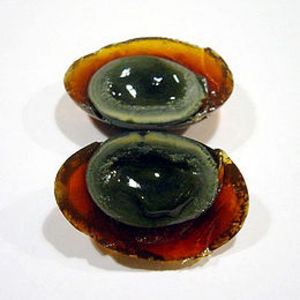Look at a chicken egg and it’s really not impressive. A chicken egg is usually a white or brown oval shell. Crack open the protective shell and you’ll basically find a yellow egg yolk (the vitellus), egg white (the albumen), and membranes. You may enjoy eating chicken eggs- there are nearly 75 billion produced in the United States annually. They’re affordable, easy to cook, and are a great source of protein. Then again, you may be allergic to eggs- they are No. 2 on the The Food Allergy and Anaphylaxis Network’s list of foods that cause the most allergic reactions. Love ’em or hate ’em, read this informative article and learn some interesting facts about chicken eggs!
There’s A Lot That Goes Into a Chicken Egg
Once a hen begins laying at about 6 months old, she needs roughly a 1/3 of a pound of food, 10 ounces of water, 14 – 16 hours of light, and 24 hours to produce just one average chicken egg. Think about that the next time you eat an egg. Some hen somewhere put a lot of effort into making your breakfast.
Sizes of Chicken Eggs
An interesting fact about chicken eggs is, they range in size from Pee Wees (usually have no yolk) to Jumbo. A dozen Pee Wee eggs weigh at least 15 ounces; a dozen Small eggs weigh at least 18 ounces; a dozen Medium eggs weigh at least 21 ounces; a dozen Large eggs weigh at least 24 ounces; a dozen Extra Large eggs weigh at least 27 ounces, and a dozen Jumbo eggs weigh at least 30 ounces.
White Eggs vs Brown – Are Brown Eggs Really Healthier?
Americans prefer white chicken eggs, while Europeans like their eggs to have brown shells. According to Amy Batal, PhD, assistant professor of poultry nutrition at the University of Georgia, brown eggs aren’t healthier than their white counterparts. Both have equal nutritional value.
Do White Chickens Lay White Eggs?
An interesting fact about chicken eggs is, the color of the shell depends on the type of hen that laid it. A chicken with white lobes and white feathers lays white eggs, while a hen that has red lobes and red feathers lays brown eggs. A hen’s diet has nothing to do with the color of the eggs she lays. There are some exceptions to this rule, such as Easter Egg chickens. They lay pale blue, green and pink eggs.
Chicken Eggs and Easter
There are many stories why eggs are a deep-rooted Easter tradition. The simplest explanation is that fertilized eggs spring forth new life when the chick hatches out. This symbolizes the spring season bursting with new life. In many religions, eggs represent Christ’s Resurrection from the tomb.
Cooking With Chicken Eggs
There are more than 100 ways to prepare eggs. You know about scrambling, frying and poaching. Three of the more unusual recipes are Century Eggs, Bacon-and-Egg Ice Cream and Hard Cooked Egg Cookies.
Resources
http://www.enc-online.org/trivia.htm
http://urbanext.illinois.edu/eggs/res16-egg.html
http://www.wisegeek.com/why-are-chicken-eggs-different-colors.htm
http://www.enc-online.org/trivia.htm
http://www.eatbetteramerica.com/askexpert/cooking-techniques/90.aspx

